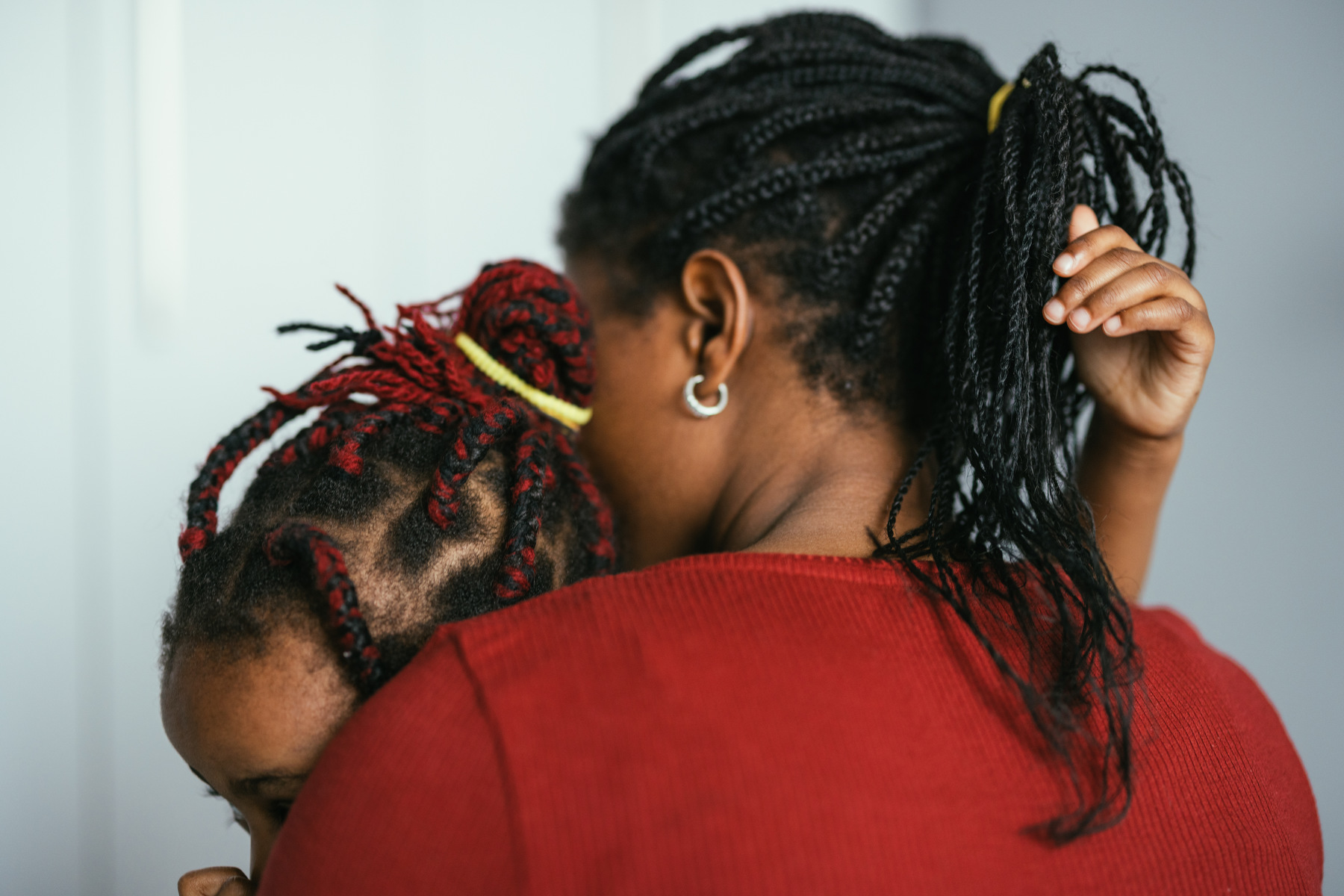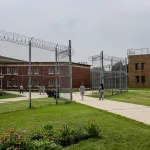When Carmen Ortega left prison in 2018, she knew that she needed a major life change. For more than five years, Ortega struggled with addiction and cycled in and out of incarceration, unable to secure a steady job or housing that would help keep her afloat.
“In between me coming out, coming in, coming out — I was, for four years straight, homeless. Every time I came out of the jail, I didn’t have nowhere to go,” Ortega, 52, told The 19th. “That is the biggest problem that we have when we come out of prison or jail. Because you don’t have that support, you go back to what you know.”
Ortega describes herself as a “go-getter” who is kind and full of joy. But during those harder years, she could feel the Carmen she knew slipping away, along with the people she loved most: her children. At the time of her first period of incarceration, Ortega’s children were young adults — her son was 17 and her two daughters were in their early 20s. Still, the accumulation of challenges fractured her family’s relationship.
“My oldest daughter said, ‘Mom, I love you so much and I care for you, and every time my phone rings, my anxiety goes up because I think they’re calling me to tell me you have passed away or something. I need to cut you off,’” Ortega recalled.
In 2020, a nonprofit called the Center for Employment Opportunities (CEO) offered Ortega a lifeline: temporary cash assistance through the group’s Returning Citizens Stimulus program. She was one of more than 10,000 people who received three monthly payments of up to $2,750 each that aimed to help formerly incarcerated people across 28 cities during the onset of the COVID-19 pandemic.
Ortega put that money toward putting a roof over her head and setting up a financial cushion, so that she would never have to be homeless again. It was the first step to building a better life and reestablishing trust with her children.
-
Read Next:
Five years after the program, a report assessing its impact indicates that even short-term cash assistance payments can have significant benefits for formerly incarcerated people by reducing parole violations that often lead to reincarceration. Despite limitations with measuring the effects of a short-term program, the Center for Employment Opportunities argues that its stimulus program is worth long-term investment and the organization is working to scale the program at a state level in New York, California and Colorado.
The program’s effect on parents in particular stood out. An estimated 80 percent of incarcerated women are mothers, and about 58 percent of incarcerated mothers have children under the age of 18. Keeping in touch while incarcerated is challenging because of the cost of prison and jail phone calls and the logistical challenges with in-person visits. On average, women are imprisoned more than 2 hours’ driving distance from their families. Several mothers who received the payments told The 19th that the financial support from the program enabled them to reconnect with their children after they were released.
Cyndy Ortega (no relation to Carmen) was incarcerated in Los Angeles for five months in 2021. Her five young sons were split up into three different foster homes. She said she was fortunate that the families caring for her children made regular phone calls to her, but those calls had to be divided over the one hour she was allowed to use the phone each day. Maintaining the connection with her youngest was particularly challenging because he was nonverbal at the time due to a speech delay, she said.
“I had never been separated from my kids, so that had to be like one of the hardest things to cope with, to understand and to accept,” said Cyndy Ortega, 36. “With the baby, it was hard — even just to hear him laugh, like it would — it would break me.”
-
Read Next:
Throughout her months in prison, she did what she could to prepare for life outside. She took a life skills class, a substance abuse course and a parenting course where she first learned about the Center for Employment Opportunities. Since the 1990s, the center has helped formerly incarcerated people with job training, coaching and paid transitional work as they look for full-time roles. But the COVID-19 pandemic presented a wave of new challenges, including historic unemployment rates.
“In 2020 a lot of things became very difficult, not only access to basic services and getting people IDs and helping people to find transitional housing, but even just being able to give people temporary work assignments, like we just weren’t able to do it,” said Simone Price, director of organizing for the Center for Employment Opportunities. “So, we got together with several other organizations and found private funding to launch the Returning Citizen Stimulus.”
Even before the pandemic, parents leaving prison faced a combination of weakened connections with family and friends, and limited access to housing and employment. These factors not only increase their chances for reincarceration but also hinder their ability to provide a stable environment for themselves and their families. One 2018 report by the Prison Policy Initiative determined that formerly incarcerated people were 10 times more likely to experience homelessness and that their unemployment rate was about 27 percent. Meanwhile, the country’s general unemployment rate during the pandemic peaked at 14.7 percent, which was the worst national rate since the 1940s.
Both private organizations like the Center for Employment Opportunities and local governments have experimented with guaranteed income programs that provide low-income individuals with monthly payments often ranging from $500 to $2,000 for a set period of time. For the center’s program specifically, receiving payments was conditional on completing goal-oriented milestones and, in some cases, attending an employment workshop.
Data gathering on the outcomes of guaranteed income programs more broadly is ongoing, but one large study previously covered by The 19th says that guaranteed income recipients are able to go back to school, start businesses and make decisions that set them up for better long-term financial health. That particular study found that guaranteed income enabled parents to improve the quality and quantity of time they spent with their children. Parents also had money to spend on resources and services to improve their child’s health and well-being.
While the Center for Employment Opportunities’ program was not limited to parents, spending related to family reunification was a top priority for the mothers who participated, Price said. Reducing parole violations that can lead to reincarceration plays a key role in this reunification. The center’s impact report, conducted by the nonprofit research firm MDRC and focused on Los Angeles and Alameda counties, found that the stimulus program reduced parole violations among participants by nearly 15 percent for up to a year after enrollment in the program. In the same counties, violent parole violations dropped by 64 percent in the same period. Young adults ages 18 to 24 demonstrated a 33 percent reduction in violent parole violations at 12-month follow up.
As part of the program, Cyndy Ortega received three payments of $700, in addition to the money she received while working for the center. The payments helped with the basics, like the clothing, hygiene products and transportation she needed to visit her children, who were still in foster care. But she could also invest in new experiences and memories with her kids, including Halloween costumes and Christmas presents. Because of her consistent efforts to see her children, a judge granted her permission to have her boys for two weeks over Christmas in 2021.
That time together was critical, Cyndy said, and by the next year, she was able to legally reunify with all of her boys.
Though Carmen Ortega’s children were older, the money she received from the stimulus was equally valuable, she said. Carmen was devastated to lose her children’s trust, but over time, “they got to see that I was really on track to be the mom that I had always been,” she said. After her release from prison, she entered a substance recovery facility, used the stimulus money to help her pay for stable housing and secured full-time work with the Center for Employment Opportunities.
“It’s amazing how someone who really wants to change can change with support and with a helping hand, Carmen Ortega said. “Not everybody who comes out of incarceration is going to do the same thing again. If they have a plan before they come out, there’s more there’s more ability to do better.”








